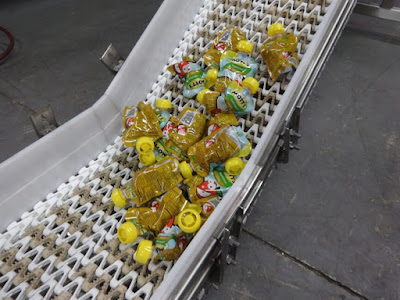Importance of Material Handling Conveyor Assessments

The material handling conveyor plays a broad and foundational role in many manufacturing environments, so constant assessment of operation is vital to avoid wide ranging challenges. Today’s belt conveyor market is extremely broad and varied in terms of models and use, longevity, process matching and maintenance. This makes it critical that the first assessment of environment and need come from the partnership between the original conveyor designer/installer and the production manufacturer. There are broad variabilities in belt types ranging from heavy duty to light duty, along with the complexity of component and product designs that range from fabric and rubber to steel mesh and plastic polymers. That means any single blog on assessment will have to be reasonably specific. Rather than the entire conveyor system, this blog will concentrate on the importance of conveyor belt assessment. Toothed sprockets drive plastic modular and metal belt conveyors, while fabric and flat belts u...





